When Reinhardt, Siberian cat and part-time adventurer, and his mom first started leash walking, the pair didn’t just clip into a leash and head out.
Hayley Vendiola, devoted cat mom and Reinhardt’s adventure buddy, told CBC News walking on a leash started young for the Siberian cat. In his kitten days, as a matter of fact. When Reinhardt was just a young floof, Hayley started harness and leash training indoors, moving to the confinement and safe space of a backyard, and then to the wider venues of parks. Once she and Reinhardt proved practiced enough, they took their adventures further into the wildlands.
For Reinhardt, the walks are important. He gets proper stimulation, time with his mom, and lots of nature-snooping.
Hayley shared, “He loves to watch the birds, he loves to watch the squirrels.”
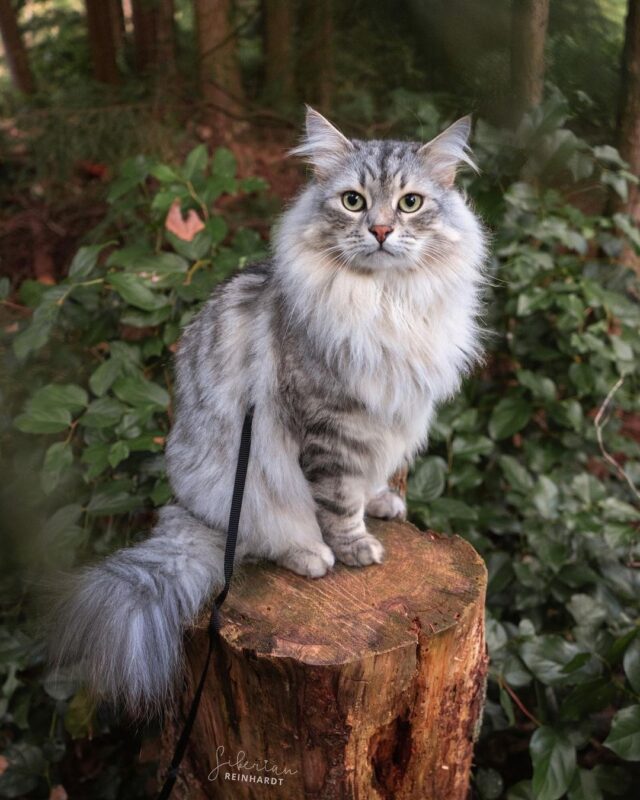
The walks also help Reinhardt hear the echo of his ancient feline predecessors as he pads through the great outdoors, with Hayley explaining, “He does get a chance to sort of get those hunting instincts out, but without us having to worry about him actually killing anything.”
Hayley and Reinhardt aren’t the only two strollers taking in the sights, though. When walking in more populated places, people are fascinated to see the fluffy cat parading with his mom. Reinhardt is used to the attention, and Hayley knows how to keep him safe in these situations. But one must remember…Hayley and Reinhardt have worked long and hard for their walks and adventures.
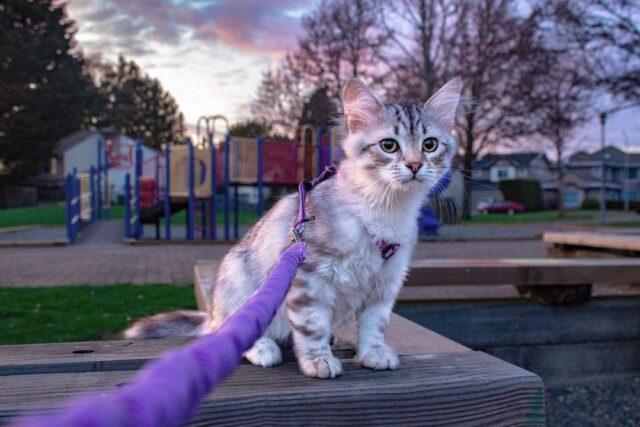
If you’re interested in teaching your cat about harness and leash walking, there are issues you should take into consideration.
Both Sides of Walking Your Cat on a Leash
In the cat world, feline fanatics are divided on the topic of walking cats on leashes.
Tasha Bukovnik, president of the Vancouver Orphan Kitten Rescue Association, feels walking cats opens them up to danger. As she told CBC News, seeing adventure cats out for walks on social media has created a trend that’s led to heartbreak for many cat parents.
Tasha said, “We get calls on a regular basis to come look for cats that have been lost because they’ve been taken out, they’ve escaped their carrier or they’ve escaped from their harness.”
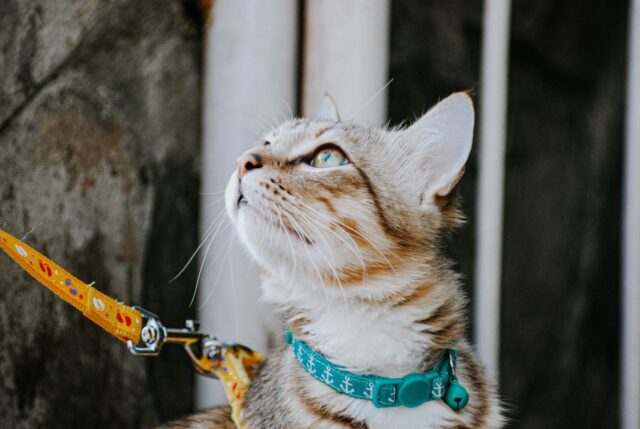
“Most of the time, we never find them again. Or if we do, it’s really in sad circumstances, where we only find a part of the cat.”
Another Opinion
Dr. Claudia Richter, a veterinarian and cat behavior expert out of British Columbia, feels a catio and other safe enclosures are a better option for cats to experience the great outdoors. As for leash walking, she holds concern over felines escaping their harnesses. She knows, like many cat parents, cats are slippery, especially when frightened or surprised. They can disappear very fast. That said, Dr. Richter and her cat, Winnie, often enjoy quiet walks because it’s good for Winnie’s all-around wellbeing.
“A lot of our cats are under-stimulated, and I do see this as a source of behaviour problems, such as peeing in the house, anxiety disorders, things like that,” explained Dr. Richter.
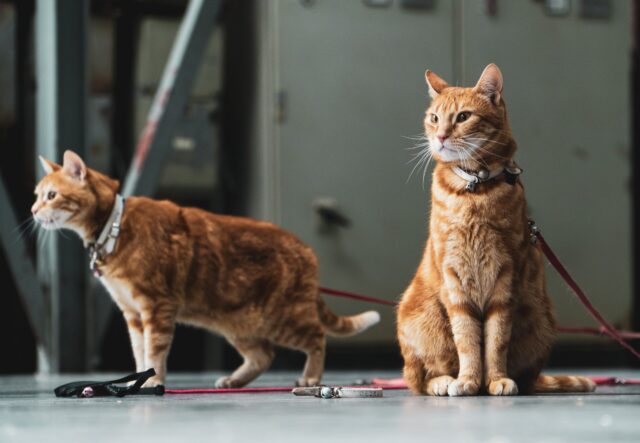
When starting out, though, she had the idea to walk her cat along with the dogs, “which very quickly got destroyed by the fact that my cat is just really slow.”
She’s right. Cats and dogs are different species and should be treated as such. Your cat may never ‘heel’ like the dog, and that’s just fine. So, how does Dr. Richter explain strolling with a kitty?
“It’s her walking and we’re just following her with the leash … as a sort of security officer.”
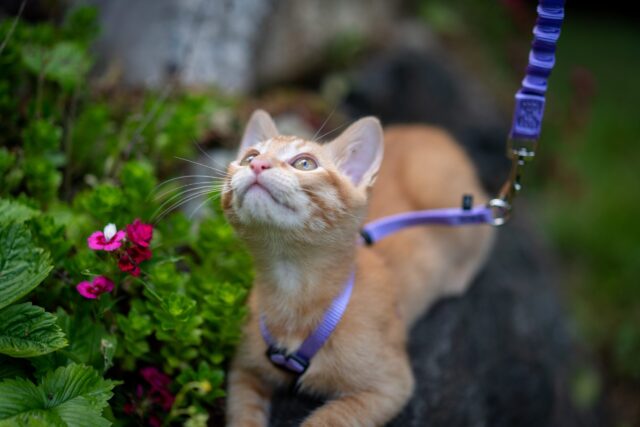
Should You Walk Your Cat on a Leash?
In the end, the decision comes down to what’s best for your cat. Before you start walking your cat on a leash, though, consider all the angles, remembering:
- Start young, start slow. Don’t just throw a harness on the cat and take off.
- Let your cat determine the speed. Pushing him too hard, too fast can put the cat off wanting to be your walking buddy.
- Never leave your cat unattended while on walks.
- If a spot is too populated, find a quieter, less active area.
- Don’t hand over the leash to anyone without walking experience when in public.
- Consider leash training for the health of your cat, not the photo ops.
- Clicker training is a proven method for teaching cats the beauty of leash walking; after all, kitties do like treats!
- Most importantly, if your cat is afraid or feels uncomfortable with the idea of a leash, don’t press the issue. Find other solutions to provide proper stimulation and activity for your feline.
Familiarizing your cat with leash walking is a process that progresses in small measures. Patience is a virtue when training cats.
For more on leash training felines, check out 12 Tips For Walking Your Cat On A Leash.
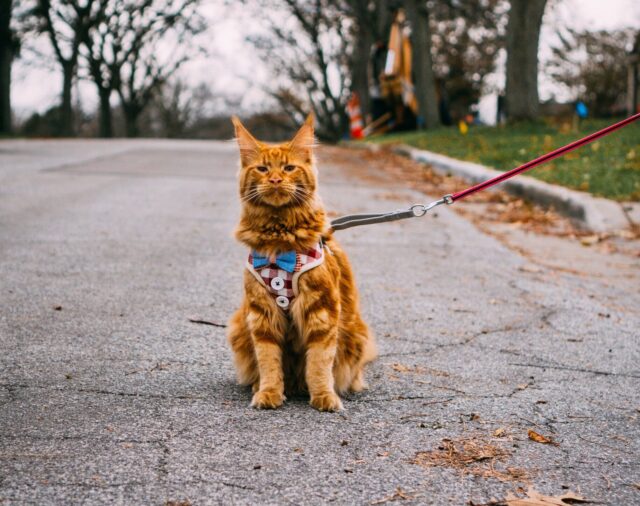
H/T: www.cbc.ca
